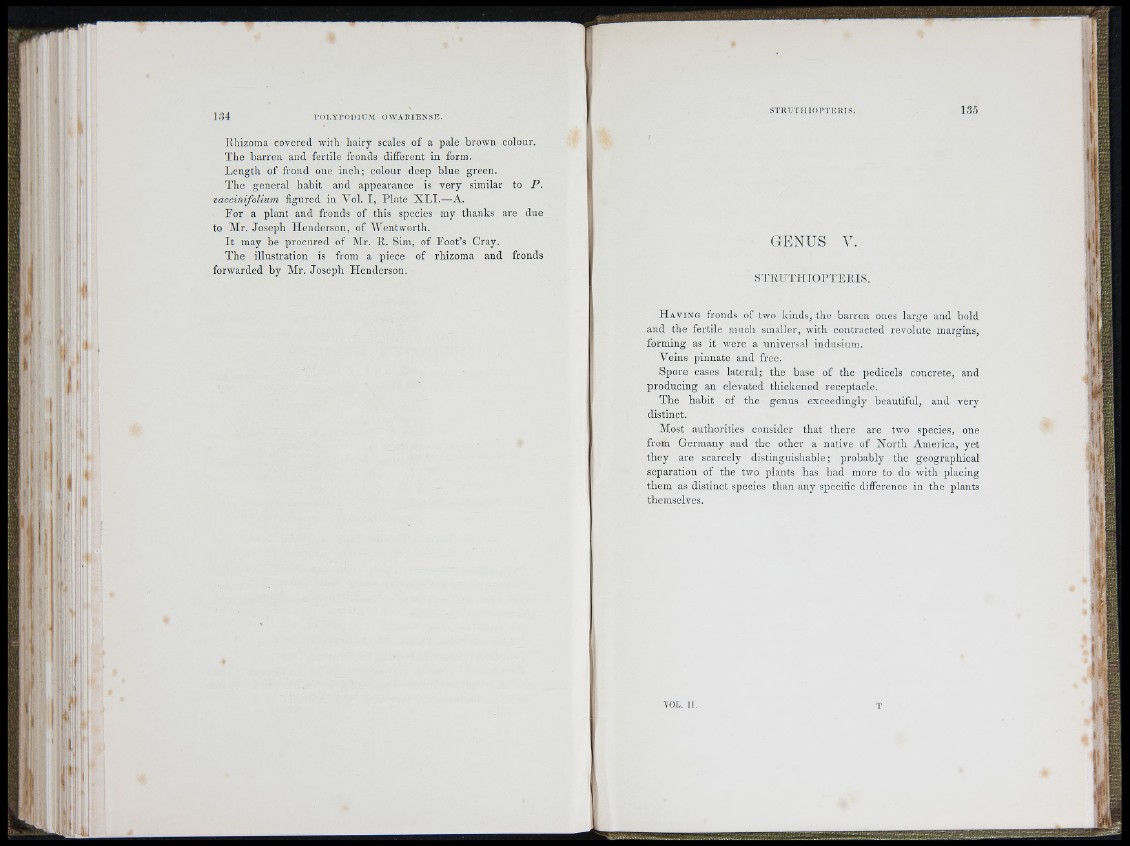
1 8 4 I’Ol.YT’ODlUdI OW A R IE N S E .
S T R U T n i O P T n i l l S . 1.85
liliizoiiia covered with hairy scales of a pale brown colour.
The b a rren and fertile fronds different in form.
L en g th of frond one in ch ; colour deep blue green.
The general habit and appearance is v ery similar to P .
vaccihifoUum figured in Vol. I , Plate X L I .—A.
F o r a plant and fronds of this species niy thanks are due
to Air. Joseph H en derson, of AAtentworth.
I t may be procured of Air. R. Sim, of F o o t’s Cray.
The illustration is from a piece of rhizoma and fronds
forwarded by Air. Joseph Henderson,
i i ‘f ti.
GEN U S AL
S 'T R U T H IO P T E R IS .
H a v in g f r o n d s o f tw o k i n d s , t h e b a r r e n o n e s l a r g e a n d b o l d
a n d t h e f e r t i l e m u c h s m a l l e r , w i t h c o n t r a c t e d r e v o l u t e m a r g i n s ,
f o rm i n g a s i t w e r e a u n i v e r s a l i n d u s i u m .
Veins pinnate and free.
Spore cases lateral; the base of the pedicels concrete, and
producing an elevated thickened receptacle.
The hab it of the genus exceedingly beautiful, and very
distinct.
Most authorities consider th a t th e re are two species, one
from Germany and the other a native of N o rth America, yet
th ey are scarcely distinguishable; probably the geographical
separation of the two plants has had more to do with placing
them as distinct species th an any specific difference in the plants
themselves.
■t» i
4 1,
I'iii
ft
VOL. II.